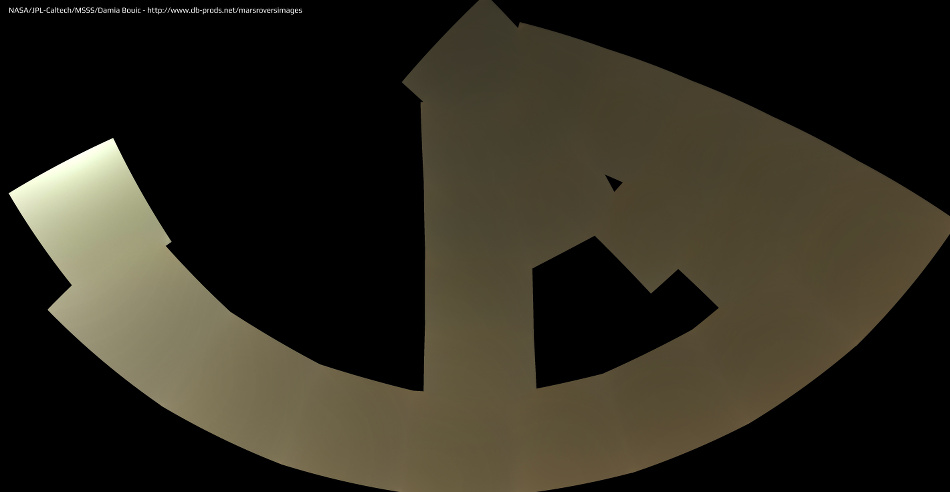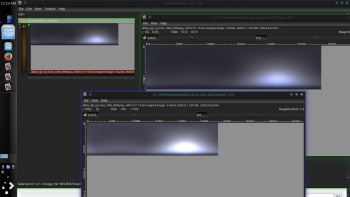Here is an attempt to generate a similar polar (fisheye) projection of the Opportunity sky link
two posts up. The sun is at the zenith and a generic land surface shows up in the corners.
Click to view attachmentThis is simulated with the ray-tracing (non MC) code. It's a good case to test improvements in the handling of multiple scattering, so the minimum brightness now shows better midway up in the sky. To get the color reasonably close, the aerosol optical properties were adjusted quite a bit. As often happens I'm bumping up against the question of whether the color/contrast has any enhancement in the actual mosaic.
One way to help make color more objective is to specify the xy chromaticity of various points in the sky. This is done for various missions
here where I was led by the Opportunity image release. Typical sky values far from the sun are x=.40, y=.38. In the simulation the xy values so far look reasonable near the horizon. As we get closer to the sun the colors are less saturated, though it doesn't tilt to all the way to bluish next to the sun as one might anticipate. With some phase function and single scattering albedo adjustments we have a second version below:
Click to view attachmentNear the horizon this has a chromaticity of x=.39, y=.38 making it a bit less orange compared to the typical values in the paper, yet a bit more tan compared with the Opportunity mosaic. A related factor is where the white point is set (for conversion to RGB) and I'm using 5800K that I also set my monitor to. This version does get slightly bluish right next to the sun. It is white here due to saturation though the blue tint would be visible in a 16-bit image. This is a good exercise for checking various aspects of color processing.
Click to view attachmentBased on this a new set of
animated and
individual 8/16 bit frames at various solar elevation angles (in 2 degree steps) is taking shape. Ten degrees of land surface shows up at the bottom, with some variations in brightness depicted. The frame-to-frame brightness is a bit inconsistent, though the full brightness range is accessible via the 16-bit images. An overall Mars sky website
is here.


